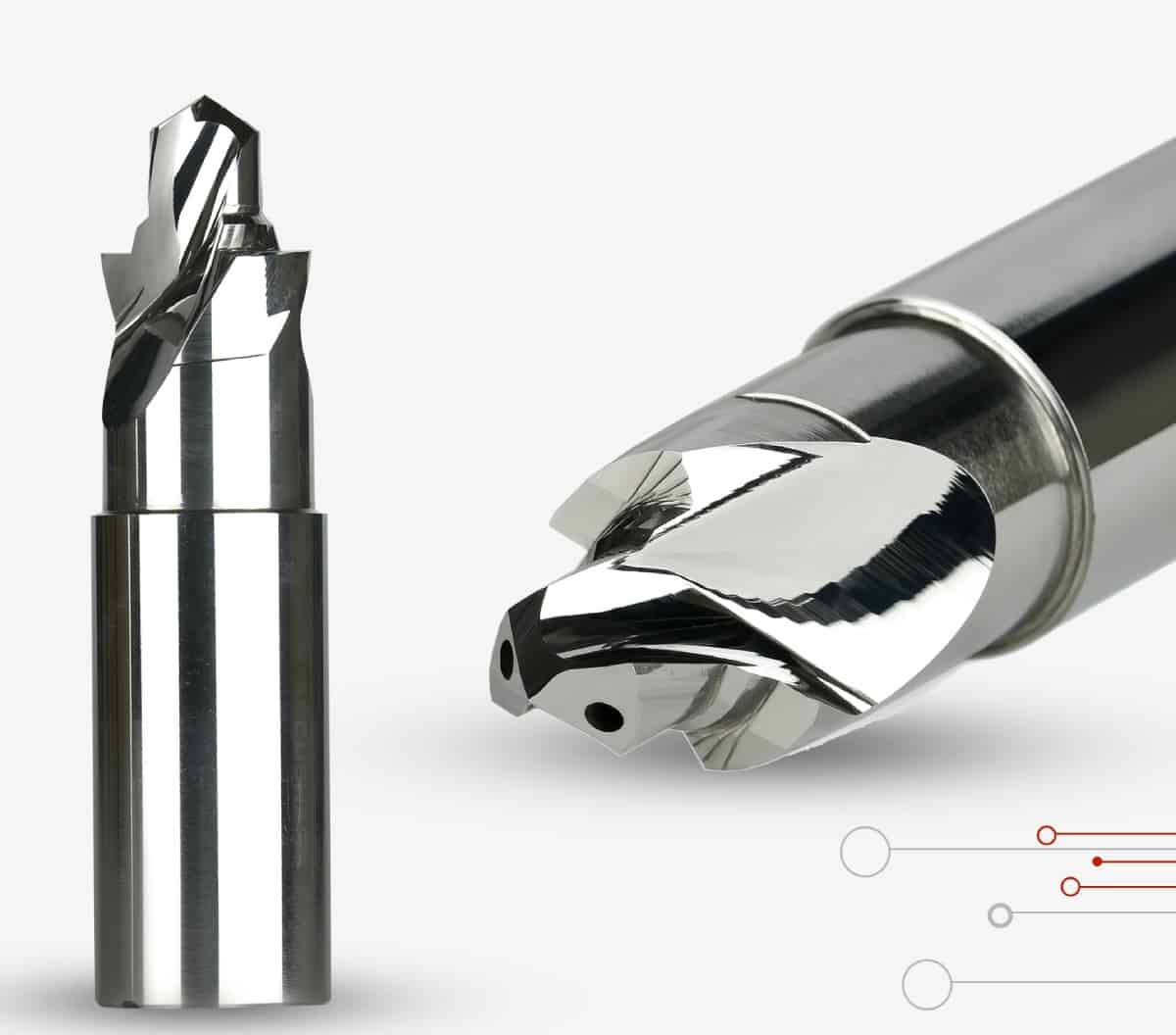Machinists frequently take the material, tooling dimensions, and flute count into account when selecting a tool for a machining procedure. Because it affects chip evacuation effectiveness, component polish, tool life, and cycle times, the helix angle must be taken into account.
End mills frequently have helical or straight edges. The helix angle is composed of 30°, 45°, and 50° sections. Due to their light, smooth, and extremely effective cutting, helix edge end milling cutters have been widely utilized in milling.
While cutting tools made for roughing feature chip-breaking grooves, those made for finishing work have straight flutes. However, a greater helix angle offers more stability and reduced loads per cutting edge. Low cutting-edge stresses and improved precision and finish on deep cuts are achieved by high helix angles.
When not required, using a lower helix can lead to chattering, poor finishes, and a shorter tool life. As a result, when utilizing a cutting tool, a machinist must take into account the end mill angle of the tool and how it may impact its efficacy in use and the finish attained.
The feed rate of an end mill is specified by its number. The length of the flutes or grooves. The term “cutting length” is frequently used improperly. The secondary cuts on a tool that create chip space at corners and ends are called gashes (notches). the area used when feeding axially and forming the final cutting edge.
WHAT ELEMENTS AFFECT THE END MILL ANGLE?
When working with stainless steel materials, which have limited thermal conductivity and a substantial impact on the cutting edge’s capacity to transport heat, it is advantageous to utilize a big helix angle end mill to extend the tool’s life.
The characteristics of a final machined surface are altered by the helix angle. When smooth finishing is desired, big helix angle end mills may be used. When utilizing an end mill with a large helix angle, the cutting resistance will rise and the force of a good helix angle cutter will rise. The proper precautions must be taken, such as employing a tool holder with strong clamping rigidity.
Even if the tool has high rigidity, it is occasionally required to utilize an end mill with a short helix angle when the rigidity of the workpiece is low, such as when processing thin plates. In other words, as the end mill’s helix angle rises, so does the distance between the workpiece and the cutting edge.
This will prolong the life of the tool and reduce the stress on the cutting edge per unit length. However, as cutting resistance increases, a tool holder with great clamping rigidity is required.
Knowing the requirements for the tool application
The ideal tool to use depends depend on what you want to accomplish. For finishing applications where the tool runs significantly faster but removes little material, a greater 45° helix is ideal. A slower 35° helix, in comparison, is more suited for roughing applications because of its enhanced strength and capacity to support a greater chip load.
The medium 40° helix strikes a fair mix between the benefits of slow and high helixes in roughing and finishing tasks. There are numerous high-performance aluminum end mills with helical carriers that have a 35°, 40°, or 45° helix.
USAGE OF END MILL ANGLES: IMPORTANCE
The cutting force of an end mill comprises an axial and a radial component. The radial component tends to bend the end mill and creates vibrations, while the axial component presses the end mill against the holder.
With increasing helix angle, the proportion of axial force increases; on a zero-degree end mill, all force is radial (straight end mill). There is a fast shock load as each edge makes contact with the workpiece’s material. Vibrations, poor surface quality on the component, and limited tool life are the results of this.
Higher angles produce an improved surface finish, greater chip evacuation, less vibration, and smoother cutting. However, because of its reduced durability, the cutter is unable to withstand high feed rates or cut depths. For heavy cutting where the finish and tolerance are crucial, use a lower helix angle cutter.
AT THE END
The helix angle is one of the major features of the helix edge end mill. The change in helix angle is strongly influenced by the cutter’s capacity to cut. Changes in the magnitude of the helix angle throughout the tool-making process are now much easier for machinists to make because of advancements in CNC machining and flexible manufacturing technologies.
To give our customers high-quality industrial equipment, SCTools is researching and creating new CNC cutting tools. If you want to know how to calculate end mill angles, get in touch with us.
Typical Milling Formulas: Speed, Feed, and Rate
Calculations of speed, feed, and rate are required for some of the most frequent milling procedures. Below are the calculations and applications for each of these:
Speed: Using the surface feet per minute and the tool diameter (D) in inches, the mill’s rotations per minute are determined. RPM = (SFM * 12) / (D * pi) is the equation. It determines the discrepancy between the tool’s and the workpiece’s velocities.
Feed: Based on the feed per tooth multiplied by the cutter’s number of teeth, the cutting feed-in inches per minute may be computed (Z). IPR = FPT * Z is the equation. It establishes the mill’s feed-in inches per rotation.
Rate: These two are multiplied by the feed rates. IPM is calculated as IPM = RPM * IPR. The feed rate per minute of work is computed.
You may perform these computations by hand because they are rather simple. However, a lot of folks favor using an online machining calculator. It is an easy technique to guarantee quick, precise, and straightforward calculations. It is simple to enter the calculation incorrectly, even with a physical engineering calculator. To perform calculations, all you need is a browser and an internet calculator.
Maximum Reliability and Durability
The material removal rate, often known as the metal removal rate, is a typical milling calculation. You may easily calculate how many cubic inches of material you will remove in a minute of milling by using this formula.
You need to know the feed rate, the depth of the cut, and the width of the cut in order to compute this. MRR = IPM * DOC * WOC is the equation for this. Again, using an end mill calculator, this can be calculated with ease.
These calculations are crucial for figuring out how durable the finished product will be. A material can become weak if too much is removed too rapidly. On the other hand, moving too slowly might lead to incredibly low production. It’s crucial for any machine operator to strike a balance between these conflicting demands. Planning the project can be facilitated by using the appropriate calculator.


